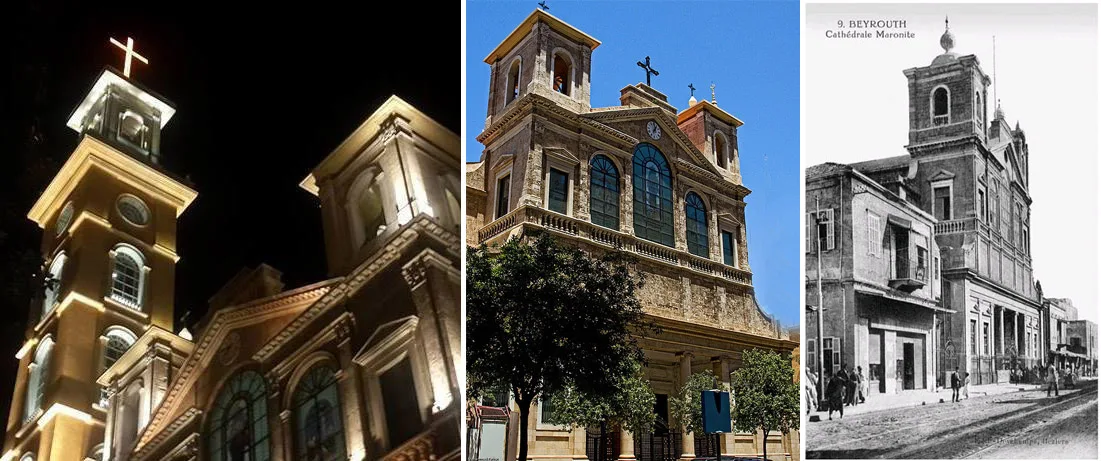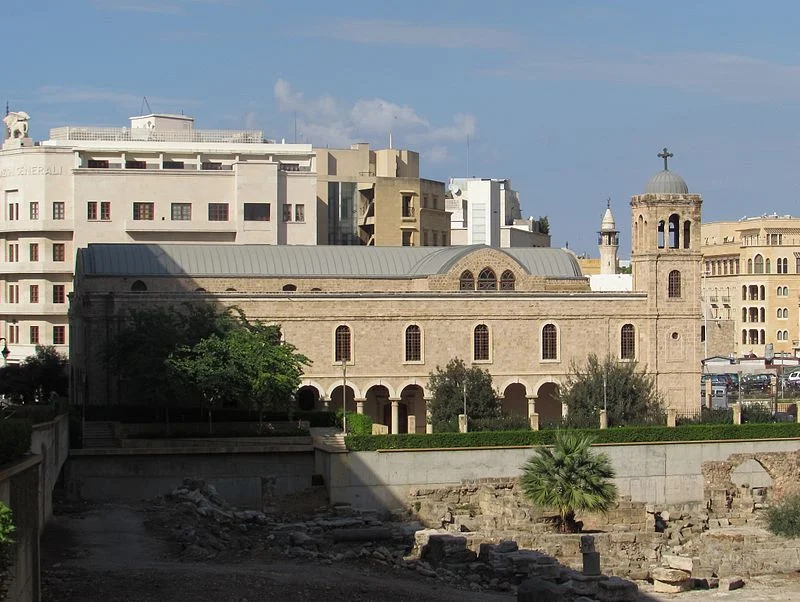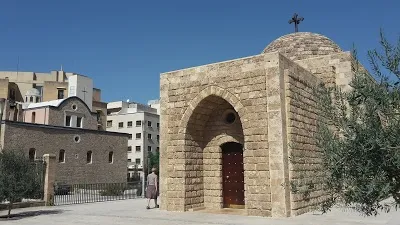Amazing Archaeological Excavations Discovered in Downtown Beirut
Archaeological Excavations Taking Place in downtown Beirut.
In this blog post, I will provide you with an overview of the discoveries made during the initial archaeological excavations at various sites and locations in downtown Beirut.
Good to note that the first exploration excavation for archaeological purposes in downtown Beirut began in the late 1990s as part of the "Beirut Central District" project, which aimed to reconstruct the devastated area following the Lebanese Civil War.
As I mentioned in my previous post, I underwent this study for the final project while I was preparing for my architecture diploma years ago, precisely in 1994.
So, I was trying to solve or find the way out concerning the management and placement of the first block of my project conception, as it was clarified in the same previous post: THE ARCHAEOLOGICAL SITE LOCATION, and I will explain how, in the next section:
 |
| Img.1- The Archeological Park, view at night, discovered near the Grand Serail in Beirut- Photo Credit: Solidere |
What are the Major Locations for Archaeological Excavations in Beirut?
As you can see in the map shown below (Img.2), the specific archeological excavations are marked with the color velvet (circled in red). They are almost located within the area limited from the West by the "Place de L'étoile" or the Parliament Square, and from the East by the "Martyrs' Square," as indicated by the red circle.
In fact, there was only one large site, which included all the traces of the old civilizations that passed through the city during the past ages. All other archaeological excavations discovered were more or less important unless the finding of some potteries, other mosaics pavers, and a colonnade, found here and there, etc…
Again, as it is shown on the map below (Img.2): This is the new Master Plan of Beirut (but has been modified and updated later) which is like a zoning map, that includes the various areas divided and classified into different functional zones, like housing, commercial, entertainment, or others…
As we can see, the velvet area named Archaeological Area (see the legend on the map below) is the most required and is the only unique zone. The other parts, which include the rest of the excavations, are not considered as appropriate, as the first one. Which is specified as a preserved area, which means it has the qualifications to be a natural conservation zone, due to its importance and value.
 |
| Img.2- A Solidere Map showing the Archeological Area (Photo: Credits to SOLIDERE) Brochure: The Paths of History 1994 |
The main specifications required to find such areas are environmentally protected and safe. As per my investigation and research with the archaeologists and related professionals who were working on the site, they confirmed that it is the best place to be a preserved or conservative site for the valuable findings, because of its natural entourage of already-preserved-architecturally-significant buildings.
So then, what are those historical and important architectural buildings that naturally surround the selected area? That is what we will discover in the next lines... We are referring to those four monumental edifices, and mainly religious, listed below:
- The Maronites' St. George's Cathedral
- The Greek Orthodox's St. George's Cathedral.
- The St. Elias Greek Catholic Cathedral
- And finally, The Mohammed Al-Amin Mosque for the Islamic sect. (Not yet built at this time)
Yes, it’s a pure coincidence, or perhaps it is God's Will, accidentally or unintentionally, to prove the national unity of the Lebanese people, as always, and this time in their deep common history.
So, let’s stop by and have a glance at each of those historical monumental and architectural edifices:
1- Maronites' Saint George Cathedral
Built around the year 1894 by the Archbishop of Beirut, Mgs. Debs, after the model of Santa Maria Maggiore in Rome. It replaced an old and smaller church belonging to the same religious affiliation.
 |
The Cathedral in its several stages, from recent till early - (Photo: Credits to Wikipedia.org)
|
Its Ottoman basement vaults served in the early period of the archaeological excavations as one of the best and biggest city’s environmental relevance as archaeological workshops.
2- Greek Orthodoxes' Saint George Cathedral
Built by Efstathius in the fifth century AD and bordered the auditoria of Beirut's Roman law school. In 551 AD a massive earthquake destroyed the whole of Beirut including the "Anastasis Cathedral". In the 12th century, a cathedral was built in the same location. The structure was badly damaged by a 1759 earthquake and was pulled down to be built anew.
 |
| Cathedral St Georges with a view from the archeological excavations by Gregor Rom - Own work, CC BY-SA 4.0 (Photo: Credits to Wikipedia.org) |
Construction started in 1764 and the new, larger structure, with one nave and a vaulted ceiling, was completed in 1767. In 1975, following the outbreak of the Lebanese Civil War, the cathedral was shelled and vandalized. It was restored during the restoration of the city, which started in 1994.
Good to note that the existing foundations of the cathedral were rich in plenty of interesting objects related to a prior era, which requires more delicate and professional work to extract those pieces without damaging them. We can still visit the cathedral and explore its treasures through a glazed floor, specially created to let visitors witness its precious heritage that adds to the nation's culture.
3- St. Elias Greek Catholic Cathedral
It is a Melkite Greek Catholic cathedral dedicated to Saint Elias, completely restored after the Lebanese Civil War (1975-1990) on previous constructions dating to a Choueirite convent from the 19th century. Its plan followed the Byzantine style.
4- The Mohammad Al-Amin Mosque
Also referred to as the Blue Mosque, an iconic Islamic Sunni Muslim mosque, is located in downtown Beirut, Lebanon. It is not similar to other archaeological buildings, but like the others, it has an interesting history since a zawiya (prayer corner) was built on this site, in the 19th century. Although it was recently constructed, the beauty of this religious edifice quickly put it at the top of the most visited tourist destinations in the whole Middle East.
Based mainly on mosque architecture, this amazing building has become a landmark for the city and a symbol for many events taking place in the nearby Martyrs' Square.
It took decades of preparation to obtain sufficient land adjacent to the old Zawiya, which led to the building of the new mosque as seen today. It was inaugurated in 2008.
Final Thoughts ...
At the end of this post, and in the next posts, I will be getting a full review of the archaeological excavations and their primitive status, with many exclusive and rare photos taken on-site at the time of the early works. I felt proud somehow when I stayed there and contemplated all that treasure of heritage that was buried here and unknown for thousands of years underneath downtown Beirut.
Disclaimer
Please note that the article is just informative; the information stated below was collected at the beginning of the project execution and many of its components were modified, canceled, or outdated. The target of this post is to highlight this big project that took place in my city, Beirut, and still has yet to reach its end.
- Since its inauguration in late 1993, this project has attracted fascination and criticism at the same time. This study is divided into four parts; it is advised to read it in its sequential order to avoid misunderstanding the ideas in the articles.
.png)








